
Moroccan Military Forum alias FAR-MAROC
Royal Moroccan Armed Forces Royal Moroccan Navy Royal Moroccan Air Forces Forces Armées Royales Forces Royales Air Marine Royale Marocaine
|
|
| | retour des avions d´attaque légers COIN/Light Attack |  |
|
+6rafi Viper MAATAWI Fremo Extreme28 Yakuza 10 participants | |
| Auteur | Message |
|---|
Yakuza
Administrateur

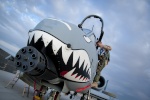
messages : 21656
Inscrit le : 15/09/2009
Localisation : 511
Nationalité : 
Médailles de mérite :  

 |  Sujet: retour des avions d´attaque légers COIN/Light Attack Sujet: retour des avions d´attaque légers COIN/Light Attack  Dim 25 Juil 2010 - 14:55 Dim 25 Juil 2010 - 14:55 | |
| - Citation :
- DATE:24/07/10
SOURCE:Flight Daily News
FARNBOROUGH: Hawker Beechcraft confident of AT-6 sales
By Craig Hoyle
US manufacturer Hawker Beechcraft is here with a show debutant angled at the increasingly popular international market for light attack aircraft to support irregular warfare operations, and also with a proven trainer which it believes is ideally placed to meet the requirements of the UK Royal Air Force.
First flown one year ago, the AT-6 is the product of a company-funded effort to adapt the T-6B/C for the close air support role, and for a strengthening requirement to build partnerships with and re-equip the air forces of nations such as Afghanistan and Iraq.
The Lockheed Martin-supplied mission system and central integrated control unit from the US Air Force's upgraded Fairchild A-10C "Warthog" ground-attack aircraft are at the heart of the new variant.
Under an initiative sponsored by the US Air National Guard, the first AT-6 testbed in April participated in the US Air Force's Joint Expeditionary Force Experiment 10-3, flown from Nellis AFB, Nevada. The company's avionics testbed aircraft, AT-1, flew nine sorties, with these having included several flights conducted while operating in tandem with A-10s. A T-6C demonstrator made a further 15 flights in support of the effort.
"We did 24 sorties totalling 46h, but burned less fuel than one [Lockheed] F-16 flight," says Derek Hess, director of AT-6 programmes. Maintenance activity required during the 12-23 April commitment totalled "only a quart of oil for each engine", he adds.
Hawker Beechcraft showcased AT-6 mission equipment such as its situational awareness datalink, secure voice transmission capability and satellite communications fit, and its ability to work with Joint Terminal Attack Controllers (JTAC) on the ground, including by providing streaming colour video.
The work also involved landing the AT-6 on a dirt runway on the Nellis range and performing a dry hook-up with a USAF Lockheed MC-130 Combat Talon II transport, in an austere ground refuelling exercise. An experienced A-10C pilot also flew a successful sortie in the aircraft after receiving only 2.5h of ground instruction on the turboprop.
Although the AT-6 features several obvious changes from Hawker Beechcraft's successful military trainer, Hess stresses that "from a parts-count perspective they are 90-95% common, with the same logistics base". Key differences include the addition of a turret-housed L-3 Wescam MX-15Di electro-optical/infrared sensor and seven external stores stations, to carry air-launched weapons or additional fuel, and a Cockpit 4000 avionics suite from Esterline CMC Electronics. This adds two 5 x 5in (125 x 125mm) multifunction displays in the cockpit.
"We build a very robust trainer, but don't have a lot of experience in combat aircraft. Lockheed does," says Hess. AT-1 was ready to fly just 201 days after the companies signed a partnership agreement. "This is a capable, affordable and sustainable aircraft. It's about integration, not invention," he says.
Under current plans, development work will take a further six to nine months to complete, but so far is "going better than anyone could have imagined", according to Hess.
Forthcoming test activities will assess the use of precision-guided air-to-surface weapons, laser-guided rockets and the integration of a full suite of countermeasures equipment and a colour helmet-mounted sighting system. AT-1 will also be equipped with a new, 1,600shp (1,190kW) Pratt & Whitney Canada PT6A-68D engine within the next month, before undergoing an operational utility evaluation "in the fall". Free-fall bombs have already been released from the testbed during earlier trials.
The company also has a second testbed aircraft, which joined its active fleet on 31 March and is dedicated to assessing the performance of the proposed light attack and armed reconnaissance (LAAR) aircraft.
Hawker Beechcraft says it has received significant interest in the AT-6 from numerous countries, including Afghanistan, Iraq, Lebanon and Thailand. An export configuration has already been released for "half a dozen of them", says Russ Bartlett, director business development. "There is funding available for LAAR for the first 15 aircraft, and a draft has been submitted for the Afghan programme," he adds.
The T/AT-6 family has applications for roles including irregular warfare, basic and intermediate pilot training, and as a weapons and JTAC training platform, the company believes. More than 30 additional countries are listed as having a potential requirement for such an aircraft, throughout Africa, Asia, Europe, Latin America and the Middle East. The type could replace legacy types including the CASA C-101, Northrop F-5 and Rockwell OV-10, and also be adapted for homeland security missions, it says.
Speaking at the show, company chief executive Bill Boisture said Hawker Beechcraft will continue to invest in irregular warfare platforms such as the AT-6 and the King Air 350ER special mission aircraft. The latter is in use with the US Air Force, export customers including Iraq and the UK and also mandated as the host aircraft for the US Army's enhanced medium-altitude reconnaissance and surveillance system.
"We're developing these aircraft at risk, and are prepared to fully demonstrate to the customer and deliver even sooner than they've said the need it. We're doing these things because we think we've got the right products. We're taking minimal technical risk to bring to the market the AT-6 and King Air responses."   _________________ 
Dernière édition par Yakuza le Lun 27 Mai 2013 - 14:15, édité 2 fois | |
|   | | Yakuza
Administrateur


messages : 21656
Inscrit le : 15/09/2009
Localisation : 511
Nationalité : 
Médailles de mérite :  

 |  Sujet: Re: retour des avions d´attaque légers COIN/Light Attack Sujet: Re: retour des avions d´attaque légers COIN/Light Attack  Dim 25 Juil 2010 - 15:22 Dim 25 Juil 2010 - 15:22 | |
| et celui la,l´agriculteur combattant  - Citation :
- DATE:23/07/10
SOURCE:Flight Daily News
FARNBOROUGH: Air Tractor sells anti-insurgent fighter to first customer
By Stephen Trimble
Texas-based Air Tractor has launched production of the AT-802U surveillance, precision strike and utility aircraft for an undisclosed foreign customer, chief designer Lee Jackson confirms.
Details about the order's size and identity remain secret at the request of the customer, Jackson says.
The converted cropduster parked on the static line also displayed a full array of weaponry, including an all-new precision glide bomb with 3m (10ft) circular error probable (CEP) accuracy in the 50kg (110lb)-class designed by Moog/FTS that is called the "border protection weapon" (BPW).
The AT-802 made its international debut last year at the Paris air show amid a global revival for aircraft optimised for counter-insurgency missions, which require low-speed envelope capability, long endurance and a mix of precision and standard weapons.
With the ability to carry a 4,000kg payload and 10h endurance, the AT-802U is able to carry a wide range of weapons and sensors, Jackson says.
On nine hard points, the static AT-802U carried two 50-cal GAU-19 Gatling guns, two BPWs, one AGM-114 Hellfire, four direct attack guided rockets (DAGR), two Mk82 (225kg-class) bombs and a launcher for unguided rockets.
In the fuselage beneath the nose, the AT-802 also carries a partially retractable targeting and surveillance sensor called the L-3 Communications Wescam MX-15Di.
Each GAU-19 is fed by a 2,900-round magazine stored in compartment between the cockpit and the forward fuel tank. The magazine can be removed to store extra sensors. Jackson says the space also could be used as a jump-seat for two people.
The forward fuel tank itself is an add-on since the AT-802U appeared in Paris, Jackson says. The 1,365 litres (360USgal) container nearly doubles the 1,440 litres fuel capacity in the wings.
Inside the two-seat cockpit, Air Tractor has integrated glass displays and sensor controls for both crewmembers. The MX-15Di imagery can be viewed in the back seat on a 17in display, while the pilot has a 6in screen. The imagery also can be transmitted by common datalink to the ground, a capability that Jackson says has been demonstrated for US special operations. 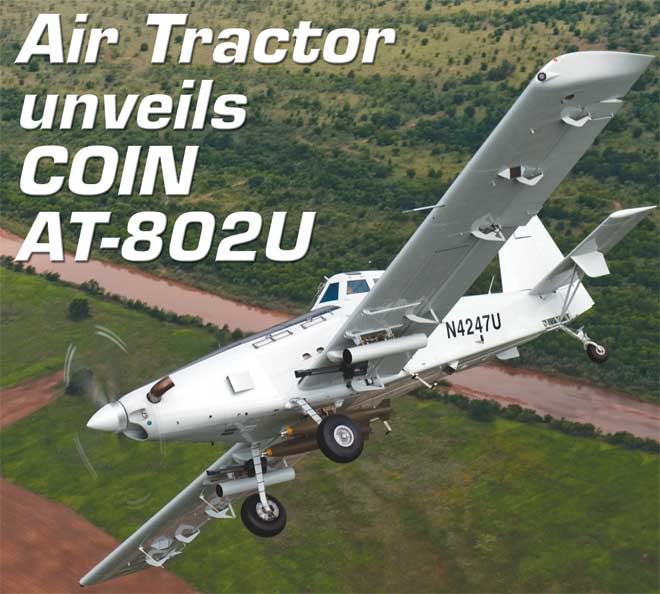  appreciez moi ca  - Spoiler:
_________________  | |
|   | | Invité
Invité
 |  Sujet: Re: retour des avions d´attaque légers COIN/Light Attack Sujet: Re: retour des avions d´attaque légers COIN/Light Attack  Dim 25 Juil 2010 - 15:25 Dim 25 Juil 2010 - 15:25 | |
| est ce que nos T-6 peuvent avoir la meme configuration d'armement que les AT-6 ?! |
|   | | Invité
Invité
 |  Sujet: Re: retour des avions d´attaque légers COIN/Light Attack Sujet: Re: retour des avions d´attaque légers COIN/Light Attack  Dim 25 Juil 2010 - 15:39 Dim 25 Juil 2010 - 15:39 | |
| Une fois les batteries S.A.traitees correctement,ces turbos feraient idéalement le boulot de suppression  Peut on imaginer ces engins remplacer ou du moins epauler des helicos d assaut?en tout cas leur profil armé en rapport a leurs prix encourage a la réflexion.... |
|   | | Yakuza
Administrateur


messages : 21656
Inscrit le : 15/09/2009
Localisation : 511
Nationalité : 
Médailles de mérite :  

 |  Sujet: Re: retour des avions d´attaque légers COIN/Light Attack Sujet: Re: retour des avions d´attaque légers COIN/Light Attack  Dim 25 Juil 2010 - 15:46 Dim 25 Juil 2010 - 15:46 | |
| - BOOMER a écrit:
- est ce que nos T-6 peuvent avoir la meme configuration d'armement que les AT-6 ?!
may be des bombes,canons,lance-roquettes,peut etre aussi LGB,mais je sais pas si les external stores "peuvent etre activés" facilement pour,en tout cas l´avionique et les stores pour fuel sont sures,manque la tete EO/IR pour la surveillance/recce/tirs de precisions,mais pour straffer pas besoin - AMEDEUS a écrit:
- Une fois les batteries S.A.traitees correctement,ces turbos feraient idéalement le boulot de suppression

Peut on imaginer ces engins remplacer ou du moins epauler des helicos d assaut?en tout cas leur profil armé en rapport
a leurs prix encourage a la réflexion.... bien sure qu´ils peuvent les epauler,la question est ce qu´en pensent nos haut gradés des FRA? si tu parles des A/T-6C,je verrai bien 6 assignés a ce role secondaire et 18 autre pour training uniquement,equipes de bonnes ECM ils peuvent nettoyer mieux que Flitox _________________  | |
|   | | Invité
Invité
 |  Sujet: Re: retour des avions d´attaque légers COIN/Light Attack Sujet: Re: retour des avions d´attaque légers COIN/Light Attack  Dim 25 Juil 2010 - 15:47 Dim 25 Juil 2010 - 15:47 | |
| - AMEDEUS a écrit:
- Une fois les batteries S.A.traitees correctement,ces turbos feraient idéalement le boulot de suppression

Peut on imaginer ces engins remplacer ou du moins epauler des helicos d assaut?en tout cas leur profil armé en rapport
a leurs prix encourage a la réflexion.... Oui oui tu as parfaitement raison amedeus, j'y ai pensé aussi en en y reflechissant alors je trouve que c''est le top, des helicos d'attaques épaulés par des AT-6 ou autre !! |
|   | | Yakuza
Administrateur


messages : 21656
Inscrit le : 15/09/2009
Localisation : 511
Nationalité : 
Médailles de mérite :  

 |  Sujet: Re: retour des avions d´attaque légers COIN/Light Attack Sujet: Re: retour des avions d´attaque légers COIN/Light Attack  Lun 2 Aoû 2010 - 14:13 Lun 2 Aoû 2010 - 14:13 | |
| je parie Philipines - Citation :
- Air Tractor starts production of AT-802U COIN aircraft
Gareth Jennings
Friday, 23 July, 2010
United States-based Air Tractor has launched production of its AT-802U light attack and counter-insurgency (COIN) aircraft for an undisclosed customer, a company spokesperson told Jane's on 21 July.
Lee Jackson, a design engineer at Air Tractor, said that a launch customer had been signed up and that production had begun at the company's facility in Olney, Texas. Jackson was unable to provide any further details, such as the customer's identity, aircraft numbers, contract value or delivery dates, citing confidentiality issues. However, he was able to say that the customer is a "strong ally" of the US. He added that Air Tractor is also currently in discussions "with a number of foreign allies" for possible sales of the aircraft.
Air Tractor first unveiled its crop-sprayer-derived COIN aircraft at the Paris Air Show in 2009. Intended as a low-cost light attack and intelligence, surveillance and reconnaissance (ISR) platform for the international market, the AT-802U was born out of an armoured crop-spraying aircraft that has been used in South America since 2002 as a counter-narcotics platform.
Air Tractor starts production of AT-802U COIN aircraft.
Production has commenced for an undisclosed customer. _________________  | |
|   | | Extreme28
Aspirant


messages : 580
Inscrit le : 01/04/2008
Localisation : MAROC
Nationalité : 
Médailles de mérite :

 |  Sujet: Re: retour des avions d´attaque légers COIN/Light Attack Sujet: Re: retour des avions d´attaque légers COIN/Light Attack  Lun 2 Aoû 2010 - 14:57 Lun 2 Aoû 2010 - 14:57 | |
| de vue ca ressemble au Turbo trush de chez la gendarmerie royale _________________ Forces Armées Royales Puissance et Élégance  وَكَانَ حَقّاً عَلَيْنَا نَصْرُ الْمُؤْمِنِينَ أوآكم الله ، حفظكم الله ، نصركم الله ، ثبتكم الله ، أيدكم الله وَكَانَ حَقّاً عَلَيْنَا نَصْرُ الْمُؤْمِنِينَ أوآكم الله ، حفظكم الله ، نصركم الله ، ثبتكم الله ، أيدكم الله | |
|   | | Yakuza
Administrateur


messages : 21656
Inscrit le : 15/09/2009
Localisation : 511
Nationalité : 
Médailles de mérite :  

 |  Sujet: Re: retour des avions d´attaque légers COIN/Light Attack Sujet: Re: retour des avions d´attaque légers COIN/Light Attack  Mar 21 Sep 2010 - 16:40 Mar 21 Sep 2010 - 16:40 | |
| - Citation :
Military technology
Air power on the cheap
Small, slow and inexpensive propeller-driven planes are starting to displace fighter jets
Sep 20th 2010
JET fighters may be sexy in a Tom Cruise-ish sort of way, but for guerilla warefare—in which the enemy rarely has an air force of his own with which to dogfight—they are often not the tool for the job. Pilotless drones can help fill the gap. Sometimes there is no substitute for having a pilot on the scene, however, so modern air forces are starting to turn to a technology from the yesteryear of flying: the turboprop.
So-called light-attack turboprops are cheap both to build and to fly. A fighter jet can cost $80m. By contrast the 208B Caravan, a light-attack turboprop made by Cessna, costs barely $2m. It also costs as little as $500 a hour to run when it is in the air, compared with $10,000 or more for a fighter jet. And, unlike jets, turboprops can use roads and fields for takeoff and landing.
Nor is it only jets that light-attack turboprops can outperform. Armed drones have drawbacks, too. The Reaper, made by General Atomics, can cost $10m or more, depending on its bells and whistles. On top of that, a single drone can require a team of more than 20 people on the ground to support it, plus satellite communications. A manned turboprop can bomb an insurgent for a third of the cost of using a drone, according to Pat Sullivan, the head of government sales at Cessna. And there are strategic considerations, too. Many countries’ armed forces rely on allies such as America for the expertise and satellite networks needed to run drones. Such allies can let you down in a pinch. Piloted light-attack planes offer complete operational independence—and, being lower-tech than many drones, are less subject to restrictions on exports in the first place.
They are also better, in many ways, than helicopters. To land a chopper safely in the dirt requires sophisticated laser scanners to detect obstacles hidden by dust thrown up by the downdraught of the rotors. On top of this, such dust makes helicopter maintenance even more difficult than it is already. Maintaining turboprops, by contrast, is easy. According to Robyn Read, an air-power strategist at the Air Force Research Institute near Montgomery, Alabama, they can be “flown and maintained by plumbers”. Thrush Aircraft, a firm based in Albany, Georgia, is even more expansive. It claims that the Vigilante, an armed version of its cropdusting plane that costs $1m, can be disassembled in the field with little more than a pocket screwdriver.
Turboprops are also hard to shoot down. Air Tractor, another firm that makes cropdusters, branched out into warplanes last year. One reason was that a fleet of 16 unarmed versions of its aircraft had been used by America’s State Department to dust South American drug plantations with herbicide—an activity that tends to provoke a hostile response from the ground. Despite the planes’ having been hit by more than 200 rounds, though, neither an aircraft nor a pilot has been lost.
In part, this is because of the robust mechanics of turboprops and in part because Air Tractor’s fuel tanks have rubber membranes which close around bullet holes to slow leaks. Add extra fuel tanks, which let the plane stay aloft for ten hours, six 225kg precision-guided bombs and more than 2,000kg of missiles, rockets and ammunition for two 50-calibre machineguns, and you have the AT-802U, a formidable yet reasonably cheap (at $5m) warplane.
Light-attack aircraft also now sport much of the electronics used by fighter jets. The MX-15, an imaging device made by L-3 WESCAM, a Canadian company, allows a pilot to read a vehicle’s license plate from a distance of 10km. It is carried by both the AT-802U and the AT-6, a top-of-the-range light-attack plane made by Hawker Beechcraft.
Not surprisingly, then, many countries with small defence budgets are investing in turboprops. Places that now fly them, or are expected to do so, include Brazil, Chile, Colombia, the Dominican Republic, Ecuador, Indonesia, Iraq, Lebanon, Morocco and Venezuela. And the United States. For the biggest military establishment in the world, too, recognises the value of this new old technology. The American air force plans to buy more than 100 turboprops and the navy is now evaluating the Super Tucano, made by Embraer, a Brazilian firm.
In aerial combat, then, low tech may be the new high tech. And there is one other advantage that the turboprop has over the jet, at least according to Mr Read—who flew turboprops on combat missions in Cambodia during the 1970s. It is that you can use a loudspeaker to talk to potential targets before deciding whether to attack them. As Winston Churchill so memorably put it: “When you have to kill a man, it costs nothing to be polite.”  http://www.economist.com/node/17079443  _________________  | |
|   | | Yakuza
Administrateur


messages : 21656
Inscrit le : 15/09/2009
Localisation : 511
Nationalité : 
Médailles de mérite :  

 |  Sujet: Re: retour des avions d´attaque légers COIN/Light Attack Sujet: Re: retour des avions d´attaque légers COIN/Light Attack  Mer 6 Oct 2010 - 17:16 Mer 6 Oct 2010 - 17:16 | |
| AT-6B
_________________  | |
|   | | Yakuza
Administrateur


messages : 21656
Inscrit le : 15/09/2009
Localisation : 511
Nationalité : 
Médailles de mérite :  

 |  Sujet: Re: retour des avions d´attaque légers COIN/Light Attack Sujet: Re: retour des avions d´attaque légers COIN/Light Attack  Ven 30 Sep 2011 - 16:54 Ven 30 Sep 2011 - 16:54 | |
| - Citation :
- Test Center proves modern weapons for light attack aircraft
Posted 9/29/2011 Updated 9/29/2011
by Maj. Gabe Johnson
162nd Fighter Wing Public Affairs
9/29/2011 - TUCSON, Ariz. -- It's light, lean, cost effective - and now lethal. The AT-6C light attack aircraft in testing here successfully employed precision-guided munitions for the first time Sept. 28.
In three test flights over Southern Arizona's Barry M. Goldwater Range the experimental airplane dropped three GBU-12s - 500-pound laser-guided bombs - and each hit its intended target.
A team of test pilots and engineers converged on the Air National Guard, Air Force Reserve Command Test Center (AATC) based at Tucson International Airport to put the propeller-driven airplane through two weeks of air-to-ground and air-to-air weapons testing.
"We're very happy. This is a culmination of a year and half of test effort for us," said Lt. Col. Keith Colmer, developmental test pilot and director of engineering for AATC. "This was the first time that we brought light attack into the modern generation of weapons."
Though light attack is not an Air Force procurement program, AATC's task is to report its findings to senior leaders early next year to help refine requirements.
The turbo prop, speed of the aircraft, configuration of the cockpit and general appearance of the Hawker Beechcraft AT-6 are very similar to aircraft the Air Force was known for decades ago, yet Colonel Colmer and his team are working with technology borrowed from A-10s and F-16s to show that modern weapons can overcome some of the limitations associated with a lack jet engines.
"You feel the air a lot more than you would with hydraulically actuated flight controls," said Dan Hinson, AT-6 lead test pilot and test manager for Hawker Beechcraft Defense Company. "It has an honest feel to it. With a heads up display in the cockpit it feels very much at home to a fighter pilot. It's easy to step in and start employing tactically."
The result is a low-cost, light attack aircraft that could one day fill a role that resides between remotely piloted aircraft and high-performance fighters, while blending many of their capabilities. At under $1,000 per flying hour, officials say a light attack platform can save money while sparing the service's current fleet from unnecessary wear and tear.
Over several months the team modified the AT-6 to carry munitions, mounted avionics and computer systems, a targeting sensor and much more.
"Since October [2010], we've been dropping unguided weapons from the airplane," said Colonel Colmer, an F-16 pilot by trade. "Sometimes, advanced weapons create lift when they're dropped from an aircraft. They can inadvertently fly back up and hit the airplane. There's a lot of tweaking that has to be done so we can get a clean separation... which was exactly what we got today."
Next week Colmer's team will test the GBU-58, a new 250-pound precision-munition that produces less blast radius and less collateral damage - a suitable weapon for counter insurgency and close air support missions.
"Also, due to their lower weight, the AT-6 would be able to carry a number of them in combat," he said.
Test Center officials also intend to prove air-to-air capabilities in upcoming trials. Next week the team will mount and test 50-caliber gun pods, firing rounds at a targeting banner in tow 2,000 feet behind a Cessna Conquest.
"We're very interested in how that performs. It could be employed for an [Aerospace Control Alert] Noble Eagle mission or counter drug mission," he said.
In the aircraft's final phase of tests in December, AATC will employ experimental weapons, specifically, laser-guided rockets with a longer range and even less collateral damage.
The Test Center, which conducts operational tests on behalf of the Guard and Reserve, is a compact group of active duty, Guard, Reserve, civilian and contractor members who field low-cost, low-risk, off-the-shelf improvements for aircraft and weapon systems across the combat Air Force. Its unique efficiency makes it well suited for building and evaluating a light attack aircraft.
"I have never worked with an organization that is as flexible and capable as AATC has been," said Hinson. "They can technically analyze problems, logically evaluate risk and then make solid risk management decisions and go execute. Because of that we've been able to move extraordinarily fast."
In addition to AT-6 testing, the center is currently working on new software and high-definition color displays for F-16s, logistics maintenance modernization for A-10s, improved situational awareness for HH-60 cockpits, and several projects to enhance mobility and special operations forces. 162fw.ang.af.mil   _________________  | |
|   | | Invité
Invité
 |  Sujet: Re: retour des avions d´attaque légers COIN/Light Attack Sujet: Re: retour des avions d´attaque légers COIN/Light Attack  Ven 30 Sep 2011 - 17:10 Ven 30 Sep 2011 - 17:10 | |
| - Citation :
- ABOUT AHRLAC
ahrlac-center-edited
Aerosud is an established leader in the South African aviation industry, is a risk sharing partner to the Airbus A400M program, was amongst others responsible for the Super Mirage project involving the re‐engining of the Mirage F1 fighter using a variant of the Russian Mig 29’s Klimov RD33 engine. The senior leaders in Aerosud were previously responsible for the overall management and design leadership of the South African Rooivalk combat support helicopter.
Aerosud has always held the view that Unmanned Aerial Vehicles (UAV) will continue to play a key role in aerial reconnaissance and surveillance, but UAV’s are characterised by a number of constraints, including high acquisition cost, control complexity, control link security, limited payload capacity, difficulties associated with operation in Air Traffic‐controlled zones etc. and also requiring a large “logistic footprint”
for deployment and control.
A study was launched into the viability of developing a low‐cost yet high‐performance manned alternative to UAV’s, which resulted in the launch of a totally new aircraft optimised for this role and today known as AHRLAC (Advanced High‐performance Reconnaissance and Surveillance Aircraft). Design characteristics include self‐deployment to and from semi‐prepared strips coupled to high cruise speed and much extended range and loiter capability. The aircraft will be optimised for multiple missions via the carriage of payload combinations including FLIR, SAR radars, COMINT and ELINT sensors etc, all integrated with an advanced avionics suite optimised for both onboard display as well as data relay. The total payload capability (excl. fuel and crew) is around 800 Kg.
Developed in close partnership with the South African Paramount Group, leaders amongst others in Land Systems, the AHRLAC mission definition focuses on “Homeland Security” covering applications such as border security, coastal and maritime/EEZ patrol, the combating of piracy, drug traffic control etc. and crew and mission protection is playing a major role in the design.
Construction of a first prototype is now well advanced, and with wind tunnel testing completed and fully instrumented testing of a ¼ scale radio controlled model having been the subject of some 80 flight tests to date, a first flight is planned for 2012.
In the pursuit of high reliability and maintainability coupled to good performance and low cost, the AHRLAC team opted for using Pratt & Whitney Canada’s PT6A engine, the world’s most popular engine in its class, and is proud to announce that Pratt & Whitney Canada is powering the first turbo‐prop civil certified aircraft developed on the African continent. - Citation :
- AHRLAC is designed, developed and manufactured to industry recommended specifications and the aricraft is well suited for a multitude of applications. The feature set will be expanded as the proven mission capabilities of AHRLAC increase.
Seats 2 in tandem with optional Martin Baker Mk16
Max. takeoff weight 3800 kg ( 8377 lbs)
Payload with full fuel 800 kg + ( 1760 lbs +)
Take-off distance 550 m (1800 ft) with full payload
Powerplant Pratt & Whitney PT6a-66 950 hp flate rated
Max. speed > 272 kts
Range > 1100 nm
Wing Span 12 m (40 ft)
Length 10.5 m (34ft)
Height 4 m ( 13ft)
Service Ceiling 31 000 ft
Max. endurance 7.5 hr +     |
|   | | Yakuza
Administrateur


messages : 21656
Inscrit le : 15/09/2009
Localisation : 511
Nationalité : 
Médailles de mérite :  

 | |   | | Fremo
Administrateur

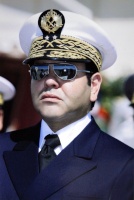
messages : 24819
Inscrit le : 14/02/2009
Localisation : 7Seas
Nationalité : 
Médailles de mérite :  
 

 |  Sujet: Re: retour des avions d´attaque légers COIN/Light Attack Sujet: Re: retour des avions d´attaque légers COIN/Light Attack  Ven 7 Oct 2011 - 1:37 Ven 7 Oct 2011 - 1:37 | |
| _________________  | |
|   | | MAATAWI
Modérateur

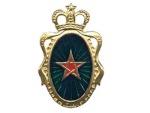
messages : 14757
Inscrit le : 07/09/2009
Localisation : Maroc
Nationalité : 
Médailles de mérite :
 
 
 
 |  Sujet: Re: retour des avions d´attaque légers COIN/Light Attack Sujet: Re: retour des avions d´attaque légers COIN/Light Attack  Jeu 13 Oct 2011 - 10:48 Jeu 13 Oct 2011 - 10:48 | |
| AT-6 successfully deploys precision-guided munitions
http://www.hawkerbeechcraft.com/include/content_view.aspx?id=13723 | |
|   | | MAATAWI
Modérateur


messages : 14757
Inscrit le : 07/09/2009
Localisation : Maroc
Nationalité : 
Médailles de mérite :
 
 
 
 |  Sujet: Re: retour des avions d´attaque légers COIN/Light Attack Sujet: Re: retour des avions d´attaque légers COIN/Light Attack  Mer 15 Fév 2012 - 13:16 Mer 15 Fév 2012 - 13:16 | |
| - Citation :
- AT-6 succesfully employs laser guided rockets
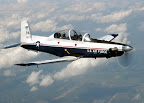
Hawker Beechcraft Defense Company (HBDC) today announced its AT-6 Light Attack aircraft has successfully employed laser-guided rockets during recent test sorties at Eglin Air Force Base in Florida.
In January, the AT-6 became the very first fixed-wing aircraft to launch a laser-guided rocket. The weapons testing is part of the ongoing congressionally funded operational evaluation of the AT-6, executed by the Air National Guard and Air Reserve Command Test Center (AATC).
“This is a big milestone in the future of Hawker Beechcraft’sl light attack programme,” said Derek Hess, HBDC director, Light Attack. nosint.blogspot | |
|   | | Invité
Invité
 |  Sujet: light air support (LAS) Sujet: light air support (LAS)  Jeu 1 Mar 2012 - 23:26 Jeu 1 Mar 2012 - 23:26 | |
| - Citation :
- A couple of years ago, the Air Force got the idea of acquiring a fleet of light air support (LAS) aircraft to use in low intensity conflicts such as Iraq and Afghanistan where operating conditions were relatively primitive and the air defense environment benign. The LAS could be provided to other partner countries lacking the funds, infrastructure and experience to acquire or support more complicated combat aircraft. In order to meet very stringent timelines to deploy the first LAS to Afghanistan and keep the price down, the request for proposals specified a non-developmental aircraft -- an off-the-shelf solution. Hawker Beechcraft proposed a variant of its venerable trainer, the T-6 turboprop and Sierra Nevada a version of the Super Tucano from Brazil’s Embraer. Both companies proposed filling their particular airframe with advanced avionics, sensors and weapons systems.
Last summer, the Air Force disqualified Hawker and in December awarded the contract for the first 20 LAS to Sierra Nevada. Hawker’s protest to the GAO was denied so the company sued. Yesterday, the U.S. Air Force took the unusual step of cancelling its contract with Sierra Nevada and apparently reinstating Hawker. In addition to performing a “volte face” on the LAS contract, the Air Force also has opened an investigation into its acquisition decision.
The LAS saga resembles the Air Force’s problematic effort to award a contract for a new aerial refueling tanker. That controversy set back the effort to modernize the aging tanker fleet by years and increased the costs by billions. The LAS debacle may in some ways be worse since on the tanker acquisition, once the GAO had ruled, the companies abided by the decision. In a tightening defense environment, could the Hawker decision to seek redress in federal court be a harbinger of things to come?
Regardless of the merits of the case and who eventually wins the LAS contract, it is clear that the losers are the U.S. and Afghan soldiers fighting the Taliban. The original goal was to deploy the first LAS to Afghanistan by early 2013. This would allow it to demonstrate its effectiveness, provide crucial support to the warfighter through two fighting seasons and give the U.S. a chance to train the Afghan Air Force in its use and maintenance. The GAO protest and the subsequent legal fight have already delayed the effort by months. Now the Air Force has further muddied the waters and injected a new delay into the process. Nor is this necessarily the end of the tale. Either party could respond to an unfavorable contract decision by the Air Force with another protest, although Sierra Nevada has no history of such actions. As a result, it is possible that LAS will arrive in theater too late to have any effect on the situation, possibly even after U.S. forces have withdrawn.
A major criticism of the Pentagon’s acquisition system is the length of time it takes to develop and deploy new weapons platforms. One reason for this is the torturous protest and review process. The Air Force went to great lengths to conduct a fair and reasonable competition. Unfortunately, it wasn’t enough. Delaying a war critical program by a year or more is unacceptable. Yet, this is becoming all-too common in defense acquisition. Taking a page from the book of tort reform advocates, perhaps the Pentagon should require that the losing side in a protest pay the program back for the additional costs. http://www.defpro.com/news/details/32949/ c'est une très bonne idée quand sa se concrétisera, je verrais bien ce nouveau type d'avion renforcer notre flotte au sud. |
|   | | MAATAWI
Modérateur


messages : 14757
Inscrit le : 07/09/2009
Localisation : Maroc
Nationalité : 
Médailles de mérite :
 
 
 
 |  Sujet: Re: retour des avions d´attaque légers COIN/Light Attack Sujet: Re: retour des avions d´attaque légers COIN/Light Attack  Jeu 29 Mar 2012 - 11:49 Jeu 29 Mar 2012 - 11:49 | |
| - Citation :
EMBRAER DEFENSE AND SECURITY ANNOUNCES MORE THAN USD 180 MILLION IN ORDERS FOR THE A-29 SUPER TUCANO FROM AFRICAN NATIONS
Embraer Defense and Security disclosed today that it has signed contracts with three African nations for the acquisition of the A-29 Super Tucano light attack and advanced training turboprop. The Burkina Faso Air Force, the first operator of this model in Africa, has already received three aircraft that are used on border patrol missions. The Angola Air Force recently acquired six of this aircraft for the same mission, and the first three will be delivered in 2012. Also, the Air Force of Mauritania chose the A-29 Super Tucano to carry out counter-insurgency missions. The total value of the contracts – including an extensive logistical, training, and replacement parts package – comes to more than USD 180 million.

Photo: © 2012 M. van Leeuwen Z.A.P.P.
“The Super Tucano is highly efficient and presents low operating costs. Its capability for surveillance and counter-insurgency missions makes it ideal for service on the continent of Africa,” said Luiz Carlos Aguiar, President, Embraer Defense and Security. “The proof is in the fact that several customers will soon be exercising their purchase rights, and the airplane has awakened the interest of several African nations.”
With these orders, nine air forces have now chosen the A-29 Super Tucano in Latin America, Africa and Southeast Asia, and the aircraft is already operating in six of them. The A-29 Super Tucano is capable of performing a broad range of missions that include light attack, aerial surveillance and interception, and counter-insurgency measures. With more than 130,000 flight hours and over 18,000 combat hours, the A-29 Super Tucano is equipped with the very latest avionics technology, including night vision, Electro-Optical/Infrared (EO/IR) system with laser aim, secure communications and data link package, as well as an unequalled weapons capacity, which makes it highly effective and gives the aircraft an excellent cost-benefit ratio.
Embraer press release, Photo: © 2012 M. van Leeuwen Z.A.P.P.
.aviationnews.eu | |
|   | | Invité
Invité
 |  Sujet: Re: retour des avions d´attaque légers COIN/Light Attack Sujet: Re: retour des avions d´attaque légers COIN/Light Attack  Jeu 29 Mar 2012 - 14:50 Jeu 29 Mar 2012 - 14:50 | |
| jaimerai bien l'algerie achete aussi |
|   | | Viper
Modérateur


messages : 7967
Inscrit le : 24/04/2007
Nationalité : 
Médailles de mérite :
 
 
 |  Sujet: Re: retour des avions d´attaque légers COIN/Light Attack Sujet: Re: retour des avions d´attaque légers COIN/Light Attack  Jeu 29 Mar 2012 - 16:23 Jeu 29 Mar 2012 - 16:23 | |
| ce sont d'exellent appareils  _________________  | |
|   | | Yakuza
Administrateur


messages : 21656
Inscrit le : 15/09/2009
Localisation : 511
Nationalité : 
Médailles de mérite :  

 |  Sujet: Re: retour des avions d´attaque légers COIN/Light Attack Sujet: Re: retour des avions d´attaque légers COIN/Light Attack  Jeu 29 Mar 2012 - 16:33 Jeu 29 Mar 2012 - 16:33 | |
| - zapbox a écrit:
- jaimerai bien l'algerie achete aussi
franchement je comprends pas pourquoi elle n´a pas fait le pas jusqu´a mtn,avec de meilleurs relations avec le bresil,et un ennemi que connait bien le ST,y´a qu´a voir ce qu´en font les colombiens et autres latinos contre leurs rebels. les helicos lourds ca alerte de loin(hal tasma3ouni min ba3id  )et sont pas vite sur place qu´un ST,qui peut straffer ou traiter de plus haute alt,tout en restant a vitesse moyenne et longuement sur cible(pinpoint) _________________  | |
|   | | Fremo
Administrateur


messages : 24819
Inscrit le : 14/02/2009
Localisation : 7Seas
Nationalité : 
Médailles de mérite :  
 

 |  Sujet: Re: retour des avions d´attaque légers COIN/Light Attack Sujet: Re: retour des avions d´attaque légers COIN/Light Attack  Mar 24 Avr 2012 - 15:10 Mar 24 Avr 2012 - 15:10 | |
| Cockpit d'un Supr Tucano  _________________  | |
|   | | Yakuza
Administrateur


messages : 21656
Inscrit le : 15/09/2009
Localisation : 511
Nationalité : 
Médailles de mérite :  

 |  Sujet: Re: retour des avions d´attaque légers COIN/Light Attack Sujet: Re: retour des avions d´attaque légers COIN/Light Attack  Dim 6 Mai 2012 - 12:59 Dim 6 Mai 2012 - 12:59 | |
| _________________  | |
|   | | MAATAWI
Modérateur


messages : 14757
Inscrit le : 07/09/2009
Localisation : Maroc
Nationalité : 
Médailles de mérite :
 
 
 
 |  Sujet: Re: retour des avions d´attaque légers COIN/Light Attack Sujet: Re: retour des avions d´attaque légers COIN/Light Attack  Mer 18 Juil 2012 - 11:46 Mer 18 Juil 2012 - 11:46 | |
| - Citation :
Irkut To Add Attack Capabilities To Yak-130 Trainer 
July 17, 2012
MOSCOW — Russia’s Irkut Corp. is working on improvements to its Yakovlev Yak-130 combat jet trainer that may turn it into a light attack aircraft.
The first stage of modernization includes the installation of an inflight refueling system and optronic pod, says Irkut Vice President Komstantin Popovich. This work should be completed in 2013, he adds.
In the next stage, designers plan to equip the aircraft with radar. Three options are being evaluated, says Popovich. The first is from Phazotron-NIIR. Earlier, Phazotron’s chief designer, Yury Guskov, told Aviation Week that his company had started developing a slot array antenna radar, dubbed FK-130, for this aircraft.
The other options are an onboard radar from Tikhomirov-NIIP or a radar pod from St. Petersburg’s Leninetz plant. According to Popovich, the radar designer and supplier is to be selected by the end of the year; development efforts are planned for 2013-14.
Popovich says the radar installation will provide the Yak-130 with target detection for air-to-ground missiles like the Kh-31 (AS-17 Krypton), Kh-38 and Kh-29 (AS-14 Kedge). “We understand now that the aircraft’s stability allows us to use such heavy missiles,” he says, adding that all these improvements are being made without the Russian air force’s request.
The aircraft can currently carry up to 3,000 kg (6,600 lb.) of combat payload including the short-range R-73 (AA-11 Archer) air-to-air missile with infrared seeker, KAB-500 guided bombs, free-falling bombs, unguided rockets or a pod with 23-mm GSh-23L twin-barreled cannon. The weapons can be fixed at nine external hardpoints: six underwing, two wingtips and one under the fuselage.
Irkut suggests that the Yak-130 attack version could be used in low-intensity conflicts to engage point-surface targets and low-speed air targets.
The Russian air force selected the Yak-130 in 2002 as its new jet aircraft for basic and advanced pilot training to replace the aging fleet of Soviet-era Czech L-39 trainers. It is equipped with a glass cockpit and a reprogrammed fly-by-wire system that can replicate the characteristics of various Russian fighters, fourth-generation and higher.
The basic Yak-130 variant completed government evaluation trials in 2009. The Russian air force now operates 12 aircraft from the initial production batch. In 2011 the air force placed an order for 55 trainers with the option for 10 more. The first batch of 15 under the deal is slated to be handed over this year; the total deliveries should by complete by 2012. aviationweek.co | |
|   | | Yakuza
Administrateur


messages : 21656
Inscrit le : 15/09/2009
Localisation : 511
Nationalité : 
Médailles de mérite :  

 |  Sujet: Re: retour des avions d´attaque légers COIN/Light Attack Sujet: Re: retour des avions d´attaque légers COIN/Light Attack  Dim 9 Sep 2012 - 22:35 Dim 9 Sep 2012 - 22:35 | |
| _________________  | |
|   | | Contenu sponsorisé
 |  Sujet: Re: retour des avions d´attaque légers COIN/Light Attack Sujet: Re: retour des avions d´attaque légers COIN/Light Attack  | |
| |
|   | | | | retour des avions d´attaque légers COIN/Light Attack |  |
|
Sujets similaires |  |
|
| | Permission de ce forum: | Vous ne pouvez pas répondre aux sujets dans ce forum
| |
| |
| |
|

